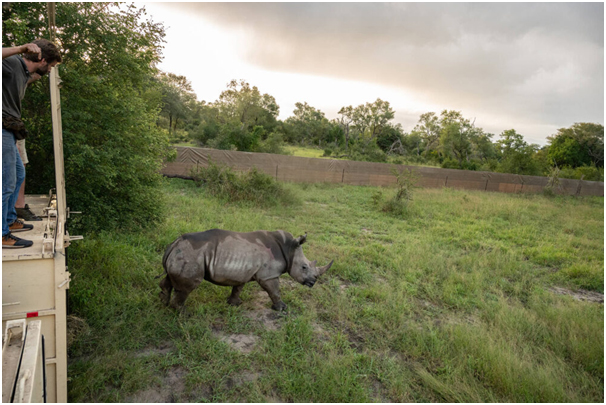The first 19 white rhinos have been successfully translocated from South Africa to Zinave National Park through the longest road-transfer of rhinos ever done. This landmark and pioneering rewilding initiative, the first in a series of white and black rhino translocations still to follow, is the result of a partnership between the National Administration for Conservation Areas (ANAC), Peace Parks Foundation and Exxaro Resources, in support of and in collaboration with the Governments of Mozambique and South Africa. The President of Mozambique, His Excellency, Filipe Nyusi visited Zinave to celebrate the return of the species to the park in more than four decades.
The rebuilding of a founder white and black rhino population will take place over the next few years as part of a national conservation initiative to reintroduce rhino back to safe havens in the country. The introduction of the rhino to Zinave will create the only “big five” national park in Mozambique. The overall objective since the signing of a long-term Co-management Agreement in 2015 between ANAC and Peace Parks was to rewild the park to create a healthy ecosystem by introducing viable wildlife populations, attract tourists back to the park and support the livelihoods of local communities living around the park.
To date 2,400 game animals representing 14 different species have been introduced to Zinave including elephant, sable, giraffe, buffalo, zebra, wildebeest, leopard and hyena. Notably a small lion population introduced themselves to the park indicating the functionality of the corridors between the five national parks in the Great Limpopo Transfrontier Conservation Area (TFCA) between Mozambique, South Africa and Zimbabwe. The Great Limpopo is one of the largest transfrontier conservation areas in the world spanning 100,000 square kilometres and was formally established 20 years ago by the Heads of State of the three countries through a Treaty.
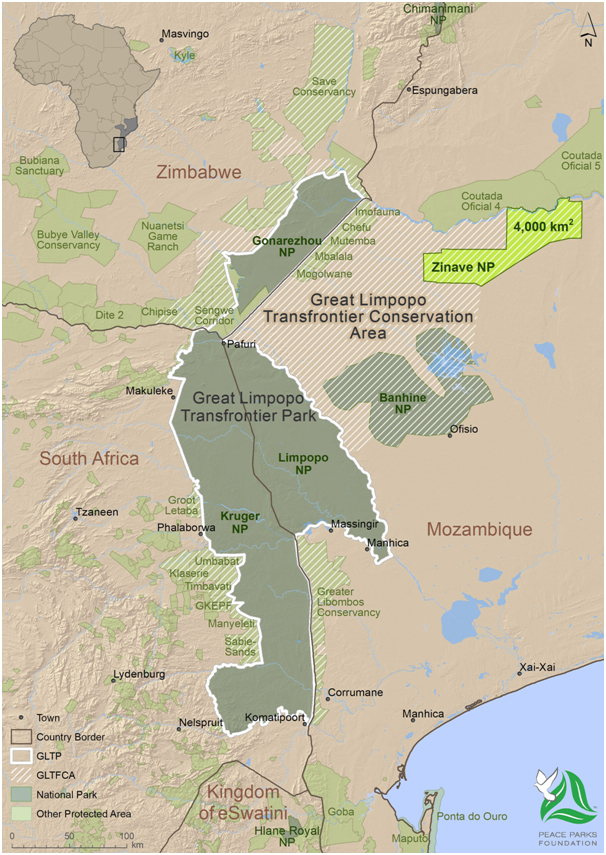
The introduction of rhino to Zinave is the pinnacle of the wildlife reintroduction programme and an important measure for the survival of the species by establishing a new founder population in a national park in Mozambique. To put this in context, over the past decade, over 8,000 black and white rhinos (over one third of the entire population left in the world) have been lost to poaching in southern Africa and this has greatly reduced the last remaining wild populations of this keystone species. To protect rhino for future generations, the reintroduction of rhinos to new suitable habitats, with capacity to rebuild large viable breeding herds in big open systems under strong security and conservation management measures is one of the many measures currently undertaken by Peace Parks to help safeguard this flagship species – and Zinave is such a safe haven, and a true conservation success story.
The 408 000 ha park was left decimated following a civil war that lasted 16 years. Through an extensive rewilding and restoration programme, commencing in 2016, ANAC and Peace Parks, has completely transformed the landscape – developing infrastructure and capacity, enhancing conservation management and security, and breathing new life into what was once referred to as a ‘silent park’.
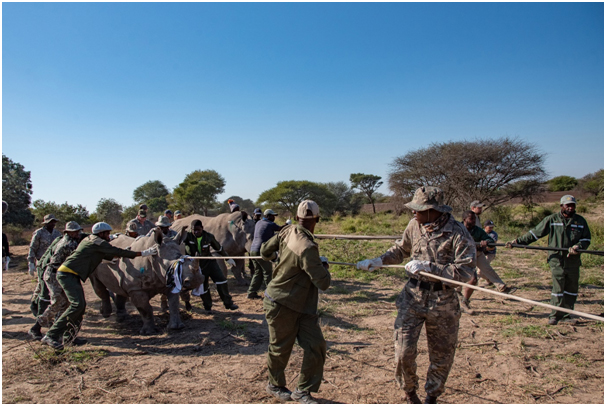
Rewilding is a vital component of restoring nature and ecological balance in large landscapes. By reintroducing wildlife to areas where the species once thrived, biodiversity is once again restored. The restoration and preservation of natural ecosystems is also recognized as one of the most effective tools we have in mitigating climate change and can increase global carbon uptake by up to 12 times through the creation of ecosystem “carbon sinks”.
“Significant and noteworthy progress has been made in the rewilding and rehabilitation of our national parks in Mozambique over the past decade. We are very proud of our collaboration with long-term partner Peace Parks Foundation that has played a key role in this journey.”
Mozambique’s Minister of Land and Environment, Ivete Maibaze. “
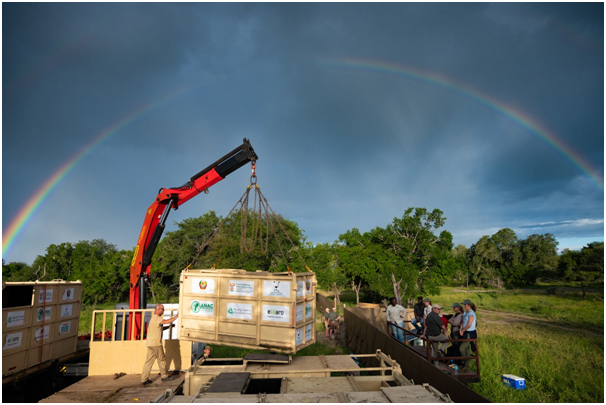
The return of the rhino allows for Zinave to be introduced as a new and exciting tourism destination in Mozambique with the sough-after “big-five” species – the only national park in Mozambique that has elephant, rhino, lion, leopard and buffalo. This will open doors for international investment and tourism development, which in turn will generate income to sustain park operations, whilst also giving back to the local communities who will receive 20% of park revenues and directly benefit from additional job creation and a whole range of livelihoods opportunities now being realised. This speaks directly to core mission of Peace Parks to create a future for people and nature to co-exist.
Werner Myburgh, Peace Parks Foundation CEO
The plan is to translocate more than 40 rhino to the park over the next two to three years. It is then envisaged that in eight to ten years, a thriving rhino population in the park could be used to restock other protected areas. To everyone’s elated surprise, the growth curve was kick-started much sooner than anticipated, with the first healthy female rhino calf born in Zinave just two weeks after their arrival.
The rhino were kindly donated by Exxaro Resources who has also made a significant contribution to the operational costs of the Park. Exxaro’s CEO Designate, Dr Nombasa Tsengwa said “We are very proud of our association with Peace Parks Foundation and to be at the forefront of introducing rhino back into a national park in Mozambique. We stand here today as Exxaro, to utilize the strength of our business to collaboratively foster enhanced biodiversity and environmental preservation practices by investing in projects of this nature. This translocation operation is a prime example of how the corporate sector, government and civil society can work together to make a significant contribution to safeguard our natural world for future generations.”
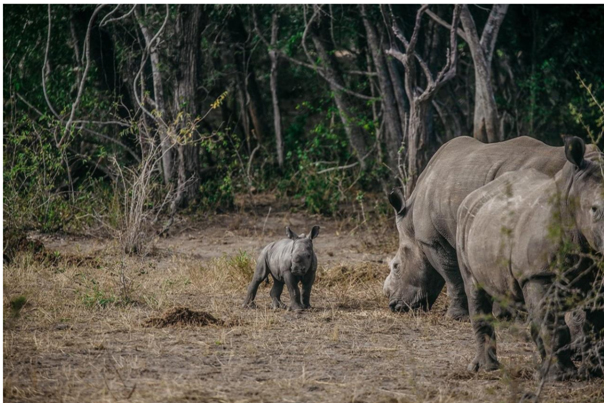
Mozambique President Filipe Nyusi joined dignitaries from all three partner countries of the Great Limpopo TFCA to commemorate these achievements and release the white rhino from the bomas into the wider sanctuary, “A word of sincere appreciation goes to the funders and partners, notably Peace Parks Foundation, for choosing to work with us in conserving biodiversity and restoring habitats under constant threat in our country. The protection of biodiversity is a universal imperative and together we will continue to fight for the preservation of our natural heritage, because only then will future generations be able to enjoy the benefits of nature and join our mission of preserving our natural resources.”
Vice-Chairman of Peace Parks Foundation, former President Joaquim Chissano said “I would like to express my sincere appreciation to all the donors that has supported ANAC and Peace Parks in the restoration of Zinave National Park and in particular Exxaro, German Postcode Lottery and MAVA Foundation who has helped make the introduction of the rhino possible. What is happening here in Zinave bodes well for the future of biodiversity conservation, economic development and regional peace and stability through the development of transfrontier conservation areas with our neighbouring countries.”

The Great Limpopo Transfrontier Conservation Area – celebrating 20 years
This year marks the 20th anniversary of the Great Limpopo Transfrontier Conservation Area (TFCA), of which Zinave is a vital component. In 2002, the Governments of Mozambique, South Africa and Zimbabwe entered into a Treaty to establish the Great Limpopo TFCA, spanning over 100 000 km2 and incorporating five national parks, including the iconic Kruger National Park. Peace Parks Foundation played a significant role in facilitating this process and has supported the development of the TFCA since 1998. As part of this agreement, the governments of Mozambique and South Africa are working together to rewild Mozambique’s national parks. Zinave also holds shared interest for both countries as it is an anchor park for migrations corridors that run between them. It is therefore fitting to celebrate two decades of continued development and restoration of this globally important cross-border conservation landscape with the introduction of these keystone species.
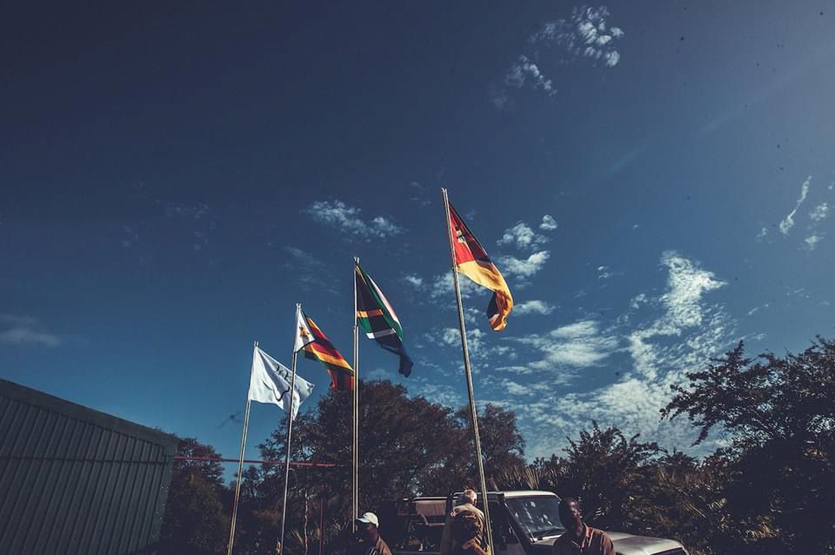
Safety and protection of the rhino
In order to maximise the safety of the rhinos, they have each been fitted with a state of the art tracking sensor, enabling the live tracking of animals and assets in a central operations control room that is operational 24/7. The rhino movements are also restricted to a dedicated sanctuary in the park that enables the ability to concentrate counter-poaching efforts and maintain tight perimeter control. The sensors form part of a suite of integrated security interventions aimed at keeping the rhino, and the park’s other wildlife, safe. Significant investment has been channeled into additional protection efforts that includes the recruitment of additional rangers that received specialist training on rhino protection. In addition, 20 sanctuary guards will be deployed for first-line detection of incursions. A helicopter and fixed-wing aircraft – integrated into a rapid response unit with a canine team – was introduced to boost surveillance and counter-poaching reaction capabilities.
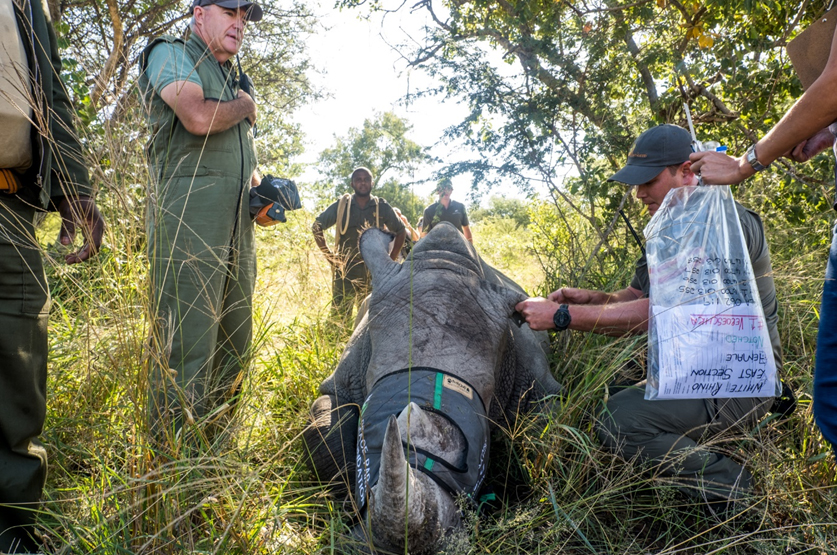
Trailblazing translocation logistics
Not only is the return of rhino to Zinave a historic occurrence, but the ground-breaking translocation process developed by the project partners, Conservation Solutions and Mozambique Wildlife Alliance, in itself holds great potential for changing the way in which new rhino ranges can be established in Africa. Faced with a distance of about 1 600 km to traverse, that would take approximately 60-70 hours to complete, the team had to quickly come up with innovative solutions to keep the rhino safe and healthy. The translocation process was broken down into three phases: In the first phase the rhino were captured and temporarily offloaded into holding bomas to monitor their physical condition and ensure that they were fit for travel. Once cleared as being healthy and in good condition, the capture process was repeated, but this time the rhino were ‘walked’ into crates and lifted onto flatbed trucks with a special crane, before being transported to a half-way point. Here they rested and took on food and water for a two days, before being loaded once more for the third and final leg of the trip. In Zinave the crates were offloaded as quickly as possible, and the rhino allowed to walk into temporary holding bomas. They were immediately given feed and access to water, and a veterinary team was on hand to check up on each one. Only once they took in the necessary sustenance and were declared as healthy, they were released into the much larger rhino sanctuary specifically built for this purpose where they can roam freely.
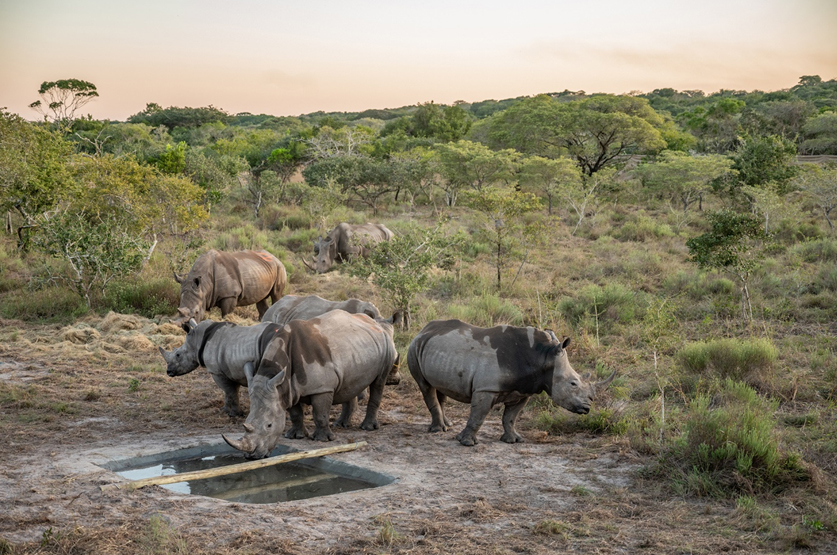
Never before has anyone made use of a halfway house to break a long journey and ensure the well-being of the animals, and it has worked extremely well. It has provided a new methodology for moving rhino across the continent and will allow for the restocking of protected areas that were previously not accessible for translocations of this nature, creating more options to set up founder populations in suitable remote habitats.




